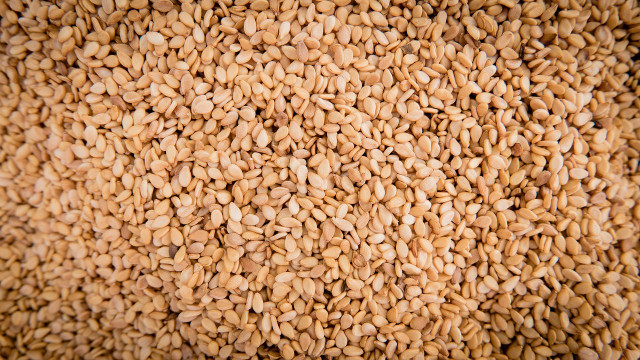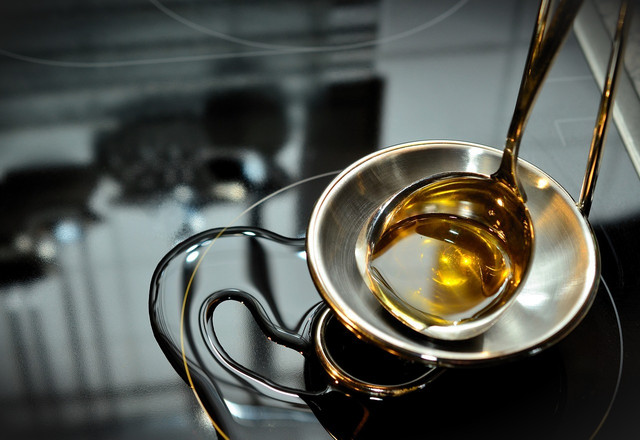Gingelly oil is bursting with healthy plant compounds and has many uses in and out of the kitchen. Read on to learn more about this versatile ingredient.
Gingelly oil is a versatile and edible vegetable oil derived from sesame seeds. It is primarily used in the South Asian and Indian regions for cooking but does have several other applications.
Though they are extracted differently, gingelly and sesame oils come from the same parent sesame seeds. Gingelly oil is extracted from roasted seeds — hence its slightly darker amber color. Meanwhile, sesame oil comes from raw seeds. Both contain many of the original compounds found in sesame seeds.
Sesame oil can be used at high temperatures for deep frying, while gingelly oil is suited for shallow frying and stir-frying or enhancing flavor in salads, meals and bread.
Nutritional Benefits of Gingelly

The compounds in oils like gingelly are reported to possess antioxidant, antiaging, blood pressure regulation, immune regulation and anticancer properties. Furthermore, they can accelerate alcohol decomposition in the liver.
Sesame seeds contain bioactive compounds like essential minerals, vitamins, plant sterols, polyunsaturated Omega 3 and 6, fatty acids and tocopherols, including vitamin E. Gingelly oil retains these healthful compounds.
Fatty acids are essential for cardiovascular and overall bodily health and are involved in regulating the inflammatory response. They may also help manage lupus, eczema, rheumatoid arthritis, cancer and other conditions.
A study of Moroccan sesame oil found it was indeed rich in healthy fatty acids such as linoleic acid, oleic acid and palmitic acid. It was also rich in tocopherols, which are antioxidants at high temperatures, and plant sterols. The study concluded that the oil has potential benefits in human nutrition or industrial, cosmetic or pharmaceutical settings.
Sesame seeds and gingelly oil also contain a few unique substances. These include sesamin and sesamolin, which improve blood pressure, lower cholesterol and act as antioxidants, and linoleate in triglyceride form, which can selectively inhibit malignant melanoma (skin cancer).
Gingelly oil may not be as well-known as other popular cooking oils — like olive oil, almond oil, sunflower oil or coconut oil — but it certainly has a role in nutrition, health and wellness.
Benefits of Gingelly Oil



Gingelly oil and other variations of oil from sesame seeds are a primary feature of the ancient Indian alternative medical practice of Ayurveda. In fact, gingelly’s medicinal uses date back thousands of years. It was a favored medicine among the ancient Egyptians, used as an antiaging beauty treatment by the Babylonians and eaten by the Romans for energy.
Given its many bioactive compounds, gingelly oil is associated with a number of health benefits. You can even use it for oil pulling, a common oral health practice. Valid and reliable evidence exists to support the role of gingelly and sesame oil in the prevention and management of:
- Inflammation and cardiovascular disease
- Arthritis (applied topically)
- Cognitive function and memory
- Excess sugar converted to fat (lipogenesis)
- High cholesterol
- Disrupted sleep patterns
In addition to all of the above health and mental wellness benefits, it also protects the nervous system.
Open Sesame Up to Good Uses



Of the commonly used vegetable oils, sesame is the cooking oil most resistant to oxidative rancidity — when oil goes bad and releases free radicals. That is due to tocopherols (vitamin E), sesamol and plant sterols that you typically don’t find in other oils. In addition, its antioxidation effects remain after heat exposure, making sesame and gingelly oil great choices for cooking and using in meals.
Gingelly Oil Recipe Ideas & Other Uses
Drizzle gingelly oil over your healthy spring salad, vegan chickpea salad or avocado and tomato salad. Use it in a vegan chop suey with stir-fried veg, a quick veggie fried rice or even a frying-pan cake recipe if you don’t want to use the oven. For more ideas, check out some of Utopia’s other handy recipes for sustainable and healthy meals.
You can use it outside of the kitchen, too. It can help manage fine, flyaway hair or work as your oil base in a DIY conditioner recipe. Its anti-inflammatory and antioxidant properties could also make a welcome addition to your skin care regime. Try it as your alternative oil base in an all-natural homemade lotion, or use it as a massage oil for tuina massage.
Gingelly oil can also be used in the practice of oil pulling as a home remedy for gingivitis. Furthermore, you can rub it into sore joints as a home remedy for knee pain.
Read more:
- 8 Hidden Benefits of Black Sesame Seeds
- No Poo Shampoo: The Natural Alternative to Conventional Shampoo
- Tutorial: Natural DIY Body Wash for Beginners
Do you like this post?







